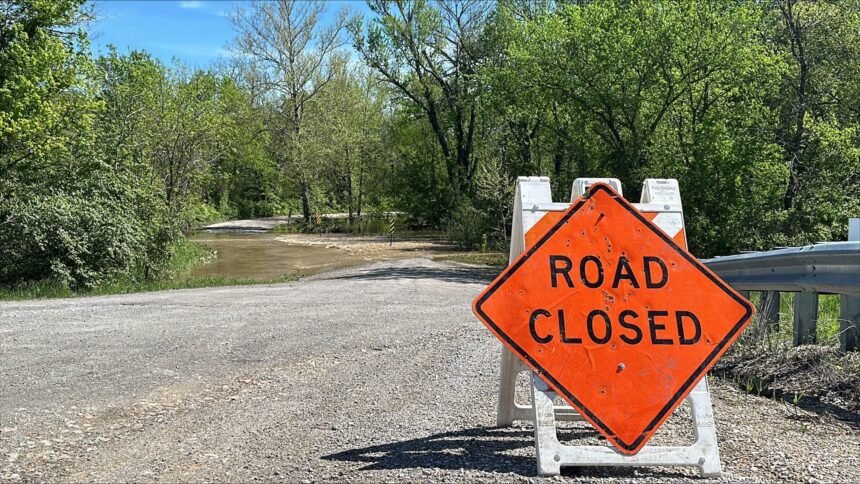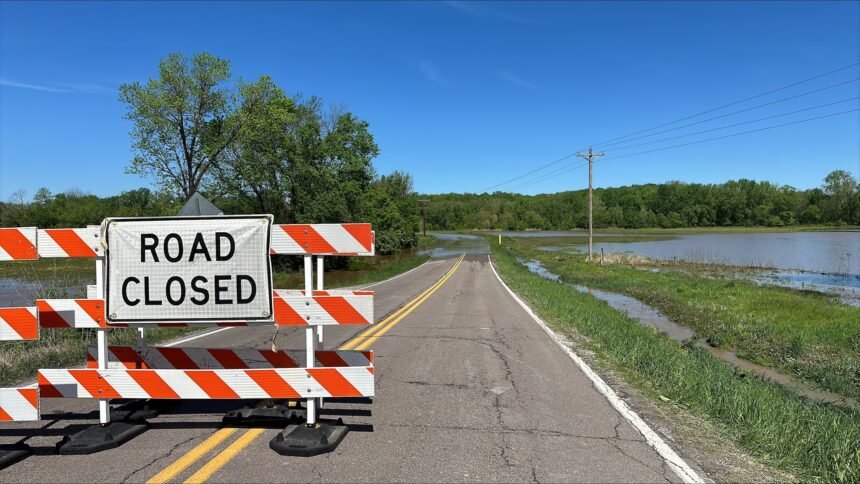Several roads closed across Missouri after weekend storms


BOONE COUNTY, Mo. (KMIZ)
After a weekend of storms, dozens of roads remained closed Monday due to flooding across the state, according to the Missouri Department of Transportation traveler information map.
In Mid-Missouri, roads are closed in several counties including, Boone, Howard, Randolph, Cooper and Pettis counties.
The map says Route E and Route ZZ, both near Columbia, were closed Monday morning because of flooding. Several low-lying roads near the Missouri River were also closed in Cole County.
ABC 17 News crews saw water covering the roadways in both directions, along with signs warning drivers that the roads were closed. However, that did not stop some people.
A local resident who lives near the area where Route E was flooded said it's not uncommon for people to move barricades blocking roads to get through flooded areas.
"The barrier has been put up there by somebody in an emergency response capacity that knows there's danger there, so you're creating a danger for yourself and your children and anybody else who's in that car and then, if you move the barrier out of the way, somebody who might obey the barrier is going to come upon it," said SEMA spokesman Mike O'Connell.
O'Connell said how some people may think it takes a huge flood for them to become dangerous.
"Most people die in flash flooding. That comes up very quickly. It can only take, you know, two inches of rain," said O'Connell.
Missouri's SEMA says flooding is the deadliest weather hazard in the state.
Jeffery Hiedenreich, Assistant Chief with Columbia Fire Department says those barricades are up for a reason, to keep the public safe from the unknown hazards that may lurk under the water.
"When you disregard those barriers, not only are you putting yourself at risk and anybody that's in the car with you, then our responders have to go out and risk their lives to save yours. And obviously, we're ready, willing and able to do that, said Hiedenreich.
Hiedenreich said anytime water is covering the roadway many dangers could be present.
"A lot of people don't often realize the power of floodwater," said Hiedenreich. "As little as six inches of water can sweep your car away and deteriorate the road."
Even first responders who are trying to respond to an emergency call obey the barricades.
"If roads are closed and impassable by motorists, we also can't use them to respond to emergencies. So there are chances that it slows or delays our response," said Hiedenreich. "As we go out on all the emergencies, including those who may be trapped in floodwaters, it may delay or change how we respond to that because we can't drive through those waters," he continued.
MoDOT is also reminding Missourians that even small amounts of moving water can be dangerous. Six inches of moving water can sweep a person off their feet and two feet of floodwater can float a car. Water moving at a speed of 2 miles per hour is powerful enough to sweep a car off a road or bridge.
ABC 17 News reached out to Sgt. Kyle Green with the Missouri State Highway Patrol, who said troopers assist at flood locations until MODOT can put up the proper signs showing the road is closed.
Hiedenreich said the best advice he can give the public would be to avoid those areas until the flooding has subsided and the roadway is visible and clear.
"Turn around, don't drown. It's not worth your life, It's not worth risking anything over driving through a flooded roadway," Hiedenreich said.
Several flood warnings were issued in multiple counties during the storms over the weekend. Western counties have seen at least three inches of rain in the last 24 hours with the possibility of more on the way.
SEMA has many ways to stop flooding deaths in Missouri. They advise drivers to not expect barriers to block off flooded low-water crossings because the water levels can rise quickly before first responders can place warning signs.
The organization also says to only drive if necessary, be alert, drive slowly, and never be tempted to drive over roadways even if they seem shallow.
When it is dark outside you have to be even more cautious because it'll be harder to recognize a flooded road. However, it's best to turn around and not drown when encountering flooded roads. Most flood deaths occur in vehicles.
On average, flash flooding kills 140 people per year in the United States.
